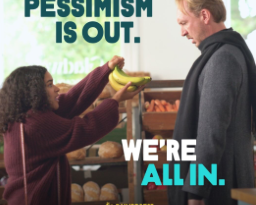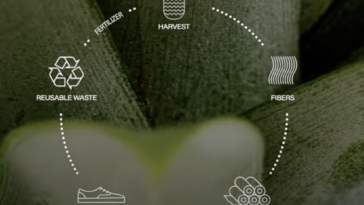Interview with Thomas Kolster made by Young Director Award:
Kolster, as one of the early pioneers in the ‘do-good’ space, coining the term ‘goodvertising’ to describe the changing advertising landscape that’s become a movement in itself, will be talking about how brands, and by extension, the filmmakers and producers who create branded work, can be – and do – better.
As a seasoned advertising professional with more than 16 years’ experience, he is vocal about how advertising can work as a force for good, and his book, Goodvertising, which explores communication for good, is the most comprehensive to date.
Ahead of his talk at the YDA, we talk to Kolster about his vision of what advertising is now and what it can and should be as we move forward.
Is the rush for brands to align themselves with social good and corporate responsibility something that you think is here to stay?
Most brands treat the biggest issues of our time – from equality to poverty to climate change – as a new trend, as if showing care is simply the ‘new black’. As every brand in the 90s was all about lifestyle, so brands today are firmly on the social and environmental issues bandwagon, like bees around a honey pot (and yes, those diminishing bee populations are seriously a cause we should worry about).
That said, one should never confuse becoming a more sustainable company, which is a must, with using every opportunity as a brand to shout, “We care!”. Unfortunately, most agencies – and some brands – don’t understand the need or the potential in embracing sustainable business practices.
Advertising is a social experiment that for the most part has gone wrong. An old model that seems unfit to serve a changing world that’s more about solving needs rather than pushing wants. Like digital pioneers such as Mark Zuckerberg and Bill Gates, who have revolutionised our society as we know it, there’s a new type of nerd you should want to befriend: The sustainable entrepreneurs.
These green nerds are transforming everything from how we eat to how we dress and even how we live. Clothing grown from mushrooms, lab-grown meat, self-sufficient villages or solar planes are not pie-in-the-sky projects anymore, but are making their way to a supermarket shelf or a 3D-printer near you, leaving disrupted industries in their wake. There’s simply no room for self-serving brands that don’t want to be a part of the solution.
You’ve said before that happiness, not materialism, is what drives people; how does that view effect how brands operate in the world?
Let me correct that. For a lot of people on this planet a safe place to live, a full stomach, shoes on their feet and other basic necessities are, unfortunately, not a given, but in our part of the world, yes, we’re drowning in stuff. Look at kids during Christmas; there is so much stuff underneath that Christmas tree, so they quickly lose interest.
When today’s young generations look at meaning, they don’t buy what you as a brand produce, but what that specific product or service can make them experience, do or become. Identity can be bought off the shelves like a cheap cap with a label, but a personality must be earned through experiences or personal accomplishment.
Take one of the world’s richest guy as an example: Mark Zuckerberg has all the money in the world to do whatever he wants, but happiness is not bought, it’s earned. Since 2009, Mark has given himself a new personal transformation challenge each year from learning Mandarin to coding.
Everything from mass-media to mass-production is being challenged and for advertising, it’s no longer about reaching people where they are but reaching ‘who’ they are. As a brand you have to help people live more simple, meaningful, independent and empowered lives, if you want to deserve people’s love.
In other words, it’s more about helping your customers go sky-diving than selling them the latest iPhone. No brand is greater than what it can make people achieve.
Can brands really positively influence the way we think about the world and how we interact with it?
Without doubt advertising is shaping our culture and our societies. Every child can easily mention a least a hundred brands before they even turn eight. One would think we would have learned from the era of Big Tobacco decades prior, but history tends to repeat itself.
What’s the societal cost of peddling products like Kellogg’s Coco Pops to children and branding it as breakfast when it essentially has the same amount of calories as a Snickers chocolate bar? The founders, Keith and John Harvey Kellogg, wouldn’t be proud. It’s a smoking gun – and we pulled the trigger.
I am embarrassed by our industry when I see the ignorance in our work. That said, there’s never been a more exciting and interesting time to apply creativity. You have every possibility to come up with real solutions rather than blowing more hot air into an already deflating advertising bubble. This change begins with us as an industry understanding and measuring the damage and it begins with you striving to make a real difference. Your creativity is the only limit.









